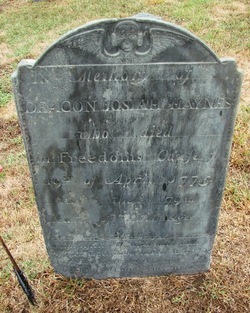“Observing the Rebels landed on Noddles Island”
as the opinion of this committee, that all the live stock be taken from Noddle’s island, Hog island, Snake island, and from that part of Chelsea near the sea coast, and be driven back; and that the execution of this business be committed to the committees of correspondence and selectmen of the towns of Medford, Malden, Chelsea and Lynn, and that they be supplied with such a number of men as they shall need, from the regiment now at Medford.That strong opinion apparently didn’t have the effect the committee wanted. It was, after all, recommending that other people undertake a difficult task that wouldn’t normally fall within their responsibilities.
So ten days later the committee resolved:
That it be recommended to Congress, immediately, to take such order respecting the removal of the sheep and hay from Noddle’s Island as they may judge proper, together with the stock on the adjacent islands.The next day, 25 May, Gen. Thomas Gage wrote to Adm. Samuel Graves (shown above):
I have this moment received Information that the Rebels [intend] this Night to destroy, and carry off all the Stock & on Noddles Island, for no reason but because the owners having sold them for the Kings Use: I therefore give you this Intelligence that you may please to order the guard boats to be particularly Attentive and to take such Other Measures as you may think Necessary for this night.According to Lt. John Barker, some British troops went onto Noddle’s Island that day “to bring off some hay.” But that was about it.
On the morning of 27 May, about 600 provincial soldiers under Col. John Nixon and Col. John Stark moved from Chelsea onto Hog Island. They began to round up livestock, most likely owned by Oliver Wendell, and set fire to hay and other crops.
In the afternoon, part of that provincial force crossed to Noddle’s Island, burning some structures. The smoke from the fires alerted British commanders. Capt. John Robinson of H.M.S. Preston sent an alert to Adm. Graves, who later wrote:
Upon observing the Rebels landed on Noddles Island, I ordered the Diana to sail immediately between it and the Main[land], and get up as high as possible to prevent their Escape, and I also directed a party of Marines to be landed for the same purpose.That started the second significant fight of the siege of Boston, which local historians later named the Battle of Chelsea Creek. Rather than recounting the two-day action blow by blow, I recommend Craig J. Brown, Victor T. Mastone, and Christopher V. Maio’s article in the New England Quarterly from 2013 and HUB History’s recent podcast.
On Saturday, 24 May, Chelsea will commemorate the Sestercentennial of the Battle of Chelsea Creek. There will be military drills, artillery demonstrations, and other events at Port Park. The Governor Bellingham Cary House Museum will have an open house. There’s also a boat tour, but that’s sold out (and the Battle of Chelsea Creek wasn’t really a good event for sailing vessels, anyway).
On that same day, East Boston will commemorate the Sestercentennial of the Battle of Chelsea Creek at Condor Street Urban Wild with two battle reenactments at 11:00 A.M. and 3:00 P.M., a boat tour, a walking tour, military music, games, crafts, and the usual activities of modern public festivals.
After the anniversary passes, I’ll discuss a couple of the outcomes of that fighting.



